«Objets trouvés» from the silence of the workshop
Patrice Alexandre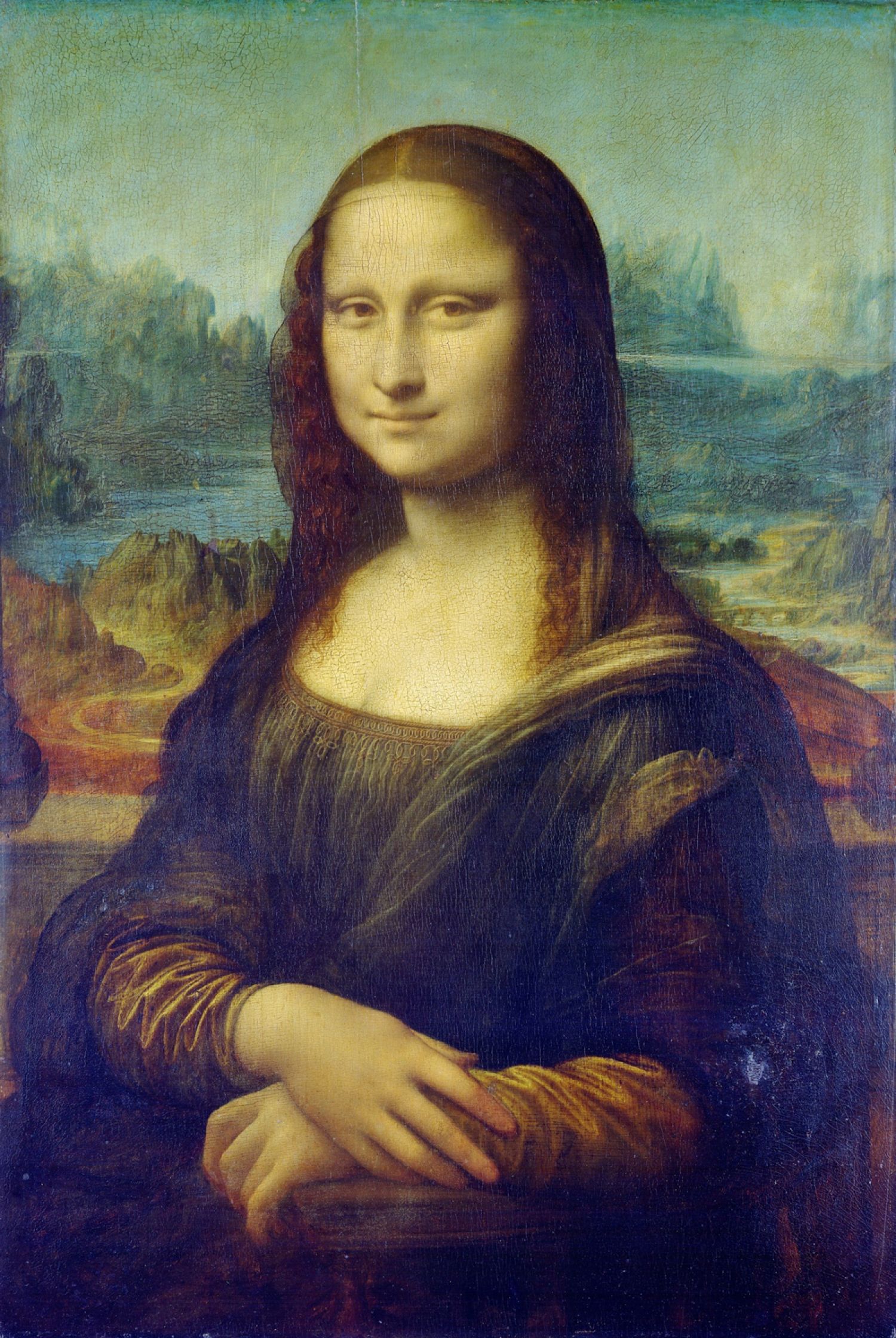
By experience, I have finally admitted that the secrets (at least this mixture of ideas, of techniques and chance) that contribute to the appearance of an unusual presence resulting from the desire to add something more to the world (at least that of the acting artist), does not come from outside, but from the intimacy of the workshop. It may, however, come from afar, from very far away, but it is called by the energy of the place. The latter is waiting to touch the idea. It is necessary to domesticate intentions, to put them to the test of everyday reality, to put them away, to use them immediately or to forget them for a long time. The workshop is an open brain that needs to be dusted off.
Workshop notes (I)
The position of objects in painting
The de-hierarchization of the representation of objects in painting has a history. Admiring what can be touched, which is part of everyday life, has certainly helped to change the course of things on the social level (in France, the revolution is not far). At the bottom of the hierarchy, still life. The window (the frame) that it proposes is not about a better life, about allegories and power. Its horizon is the soiled walls on which appear the daily traces made by the occupants of the houses in which are displayed the content of what will alert the smell and delight the paunch: the promise of a good feast.
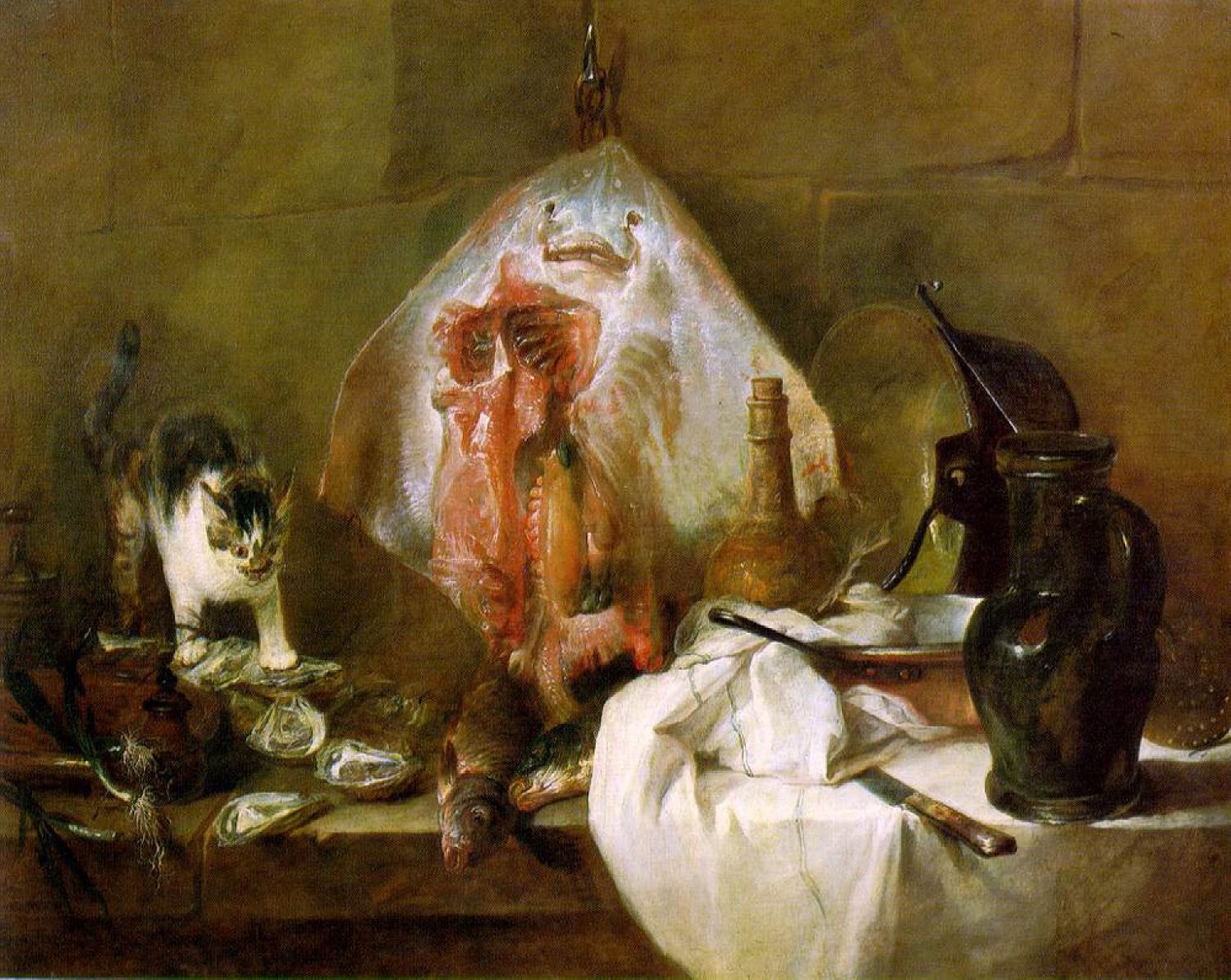
The Ray by Jean Siméon Chardin (1725-1726) is a «living» example of this small revolution that happened in the image to be contemplated. It’s the case of a painter who seems to fade away before his subject, a painter who directs his eyes into the eyes of the beast, while giving it the title role. We must then dare to make a comparison with another painting exhibited in the Louvre, which has long looked at us. It plays almost the same role as Chardin’s ray with its grinning smile. I am, of course, thinking of the Mona Lisa who is looking at us, who has no other ambition than to look at us. This painting closes the long historical series of virgins whose eyes turn in pain. Mona Lisa takes the place of the greatest mourner of all time and she quietly smiles at us. In reality, who can find again the power of the ecstasy of a Madonna by a Giovanni Bellini after the fatal blow resulting from the act of sitting a «bourgeoise» in the very place of the mother of Christ? To look at her, to look at her looking at us, is to live the same time the painter assigns us. Leonardo connects Mona Lisa to the landscape only by a bridge. Daniel Arasse took into consideration this bridge and its meaning, this passage between nature and the woman with her disturbing smile. She knows that she is painted on a black background, which ascends inexorably towards the surface. One day, she will undoubtedly become the most beautiful black monochrome in the history of painting.
But let’s drop this question now. What I wanted to say here is the following: I believe that at 29, Chardin created one of the most unbelievable works in the history of Western art. This artist, at the bottom of the hierarchy of themes, recomposes the order of things by upsetting the imperious rules of the Royal Academy in France. After the bourgeoise who took the virgin’s place, here comes the beast, caught in the net from the open sea, naked, scratched, while distributing the roles of each element of this strange composition.
We are facing the wall, which literally toggles the presented objects towards the viewer (at the dawn of the 20th century, Paul Cézanne will fully understand the lesson of this spatial organization and later, Henri Matisse will remember the lesson, as well as the author of these lines who will exercise for two years in the realm of the pseudo pastiche). In the middle of his composition, the painter hangs a disembowelled and bloody fish, dividing the world in two parts: the kitchen on the right, food and movement on the left. A knife that we could catch, the sharpened blade half hidden by the sheet that undoubtedly wiped the blood of the beast. The edge of the knife orientated towards the oyster, the leek, the disobedient cat with its legs resting on the shells slightly opened by the knife of the criminal artist. Murder and cooking, everything is in place to assume the ritual. As an expert in the fluid language of colors, Chardin plays the cold and the warm, the heat rises, the cold goes down to the corner of the stone and turns left towards the blue of the knife. After Chardin and with Jacqueline Lichtenstein (The Blind Spot), one can then meditate upon «the idea of space in the modern sense of the term as a space in which the elements are defined in a purely differential way, from their respective positions and no longer according to a hierarchy».
Workshop notes (II)
The value and destiny of objects
Back to the workshop. Objects and ideas contaminate each other. In a workshop, they take an unusual place. I have the impression that the ideas are floating in the air and that the objects are expressing their will and readiness. Entering the workshop means accepting to continue the battle with one’s own monsters. I am always a little afraid to slip the key into the lock. Yet we must enter. There are the old achievements, those in the course of work, the tools and the things that impatiently await their hour. The objects in the workshop come from diverse backgrounds and were found by chance. Some of them will return to their solitude or will go back to the garbage. Other will resist by finally sliding their unusual presences in places that did not expect them. Indeed, it seems to me that art often comes from the telescoping of various elements, which should never have met.
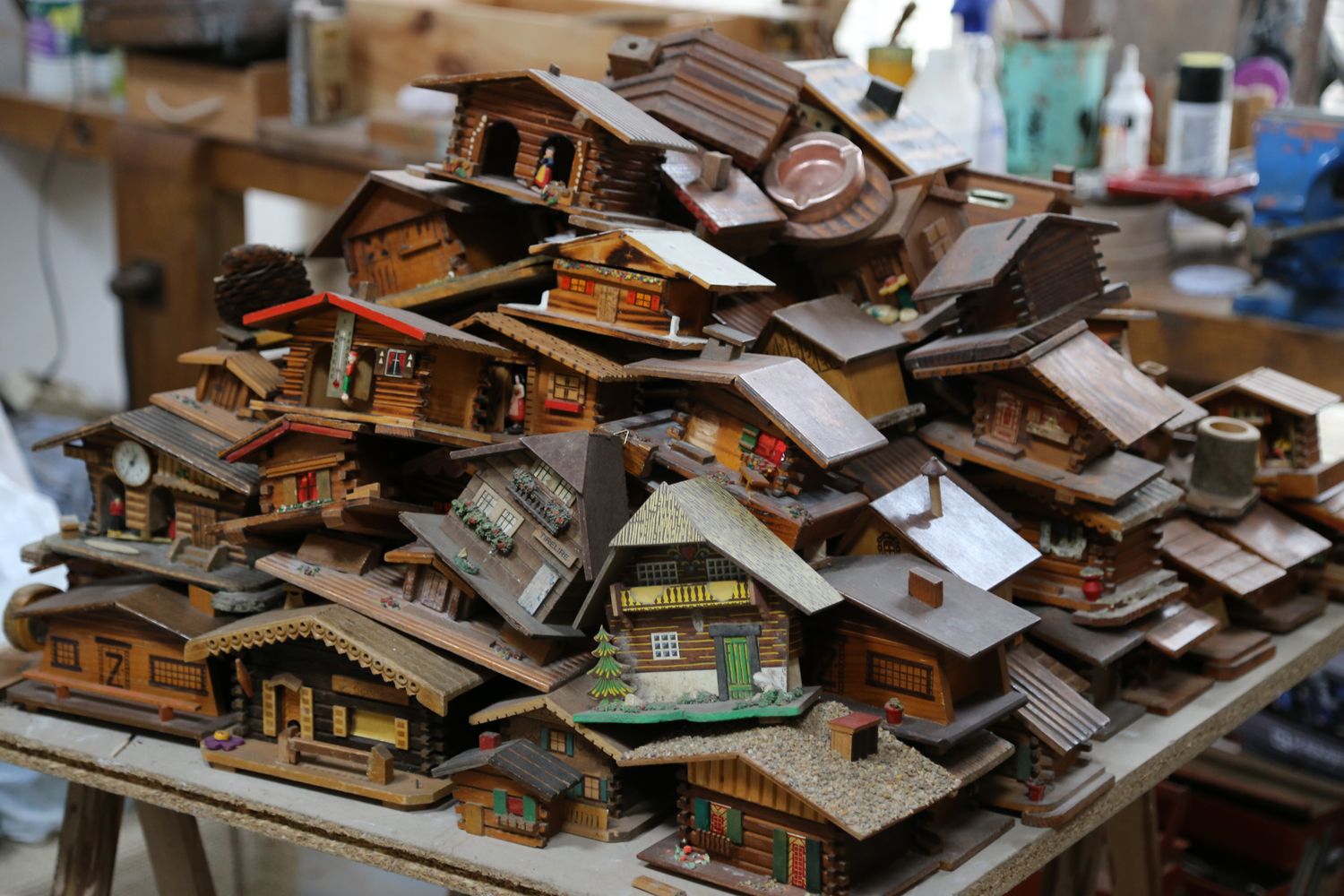
An anecdote can enlighten the reader in this written walk. I have several methods to approach an exhibition, a book or, and this is the case here, flea markets that grow here and there in the villages around my workshop. When I visit them nowadays, I do not try to spot anything that would somehow increase the objects scattered from my den. I wait for them to manifest themselves, to be noticed. So it happened to me, in the flea market of Esternay, a town about a hundred kilometres east of Paris, to walk among all these old but also recent utensils, abandoned by their owners. No other place than the flea market emphasizes more the actual de-hierarchization of objects losing their utilitarian and decorative functions.
Abandoned, sometimes rejected, they seem to be watching their new buyers. Thus, I met a collector of toy swiss chalets exposed in bulk. I contemplated these wooden realisations that make music and tell the weather, with the help of little personages returning and leaving the small houses according to the current weather.
It’s also possible to add them some furniture like miniature fir trees or wells and to cut the roof with a small saw and the cottage becomes a piggy bank. I inquired about the price of each of these objects. Seeing that the requested sum was so little, I asked the second-hand dealer for the price of the entire collection. Sold off, I bought everything. The whole thing was taken into the workshop and was left in a corner. Then, a work by the painter Boris Mikhaylovich Kustodiev came back to my mind, an immense painting (1892 x 833 cm) currently housed at the Tretyakov Gallery in Moscow.
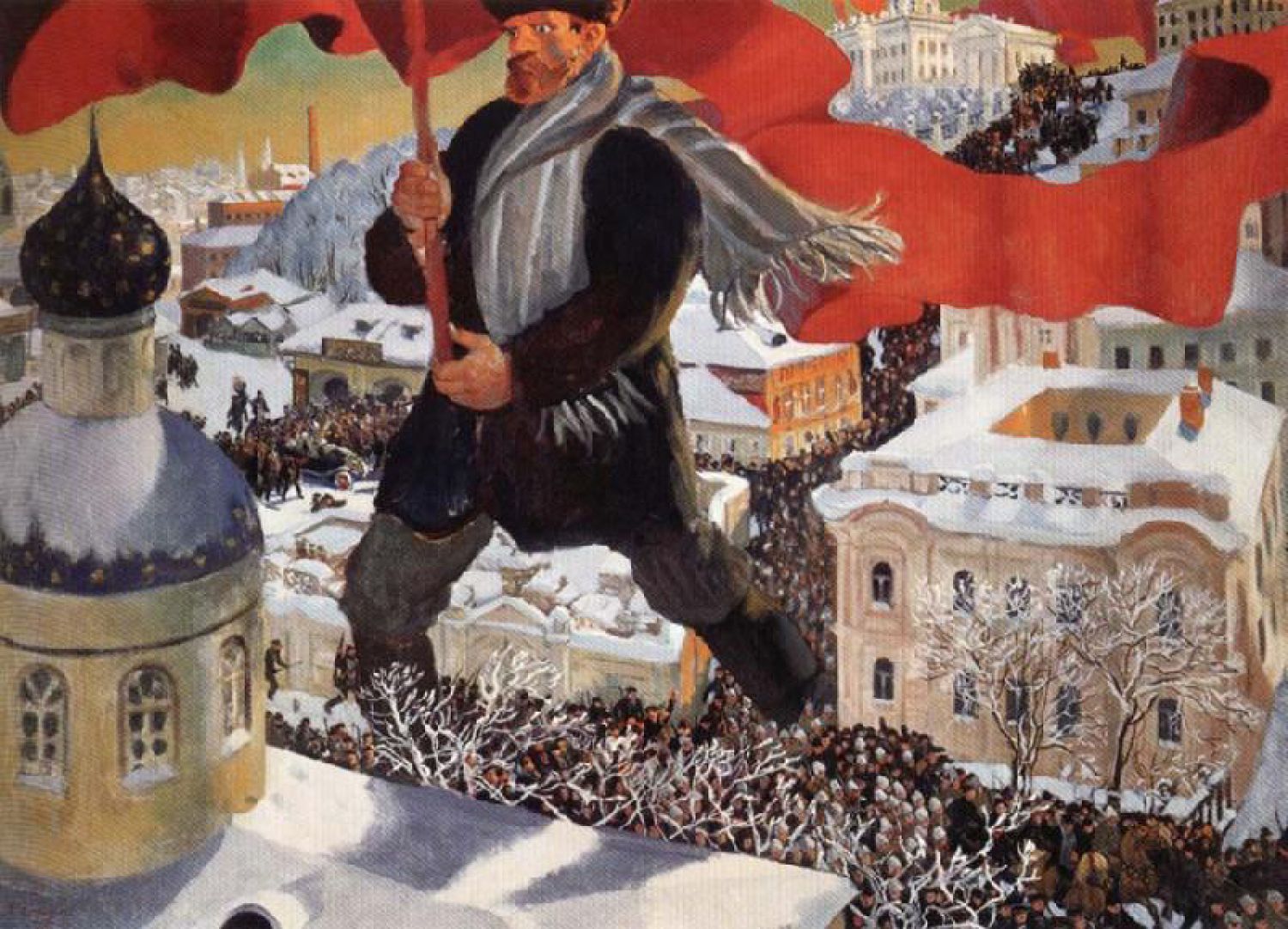
Painted in 1920, three years after Lenin’s «coup d'état», this work intended to bear the symbol of the Bolshevik Revolution of 1917. I must note that the same painter executed a portrait of Tsar Nicholas II in 1915... Besides the theme, I was fascinated by the composition and the scale relationship between the immense figure – the Bolshevik – and the surrounding crowd. I also noticed the size of the surrounding buildings. Generally, the wrong idea is to act immediately. The latter must be allowed to rest for a certain time and to be put to the test of the workshop’s space and reality. Then – and sometimes long after – the «mayonnaise» begins to form. And I am preparing, with a note of humour, what I will temporarily call, «the invasion of Switzerland by an enemy army».
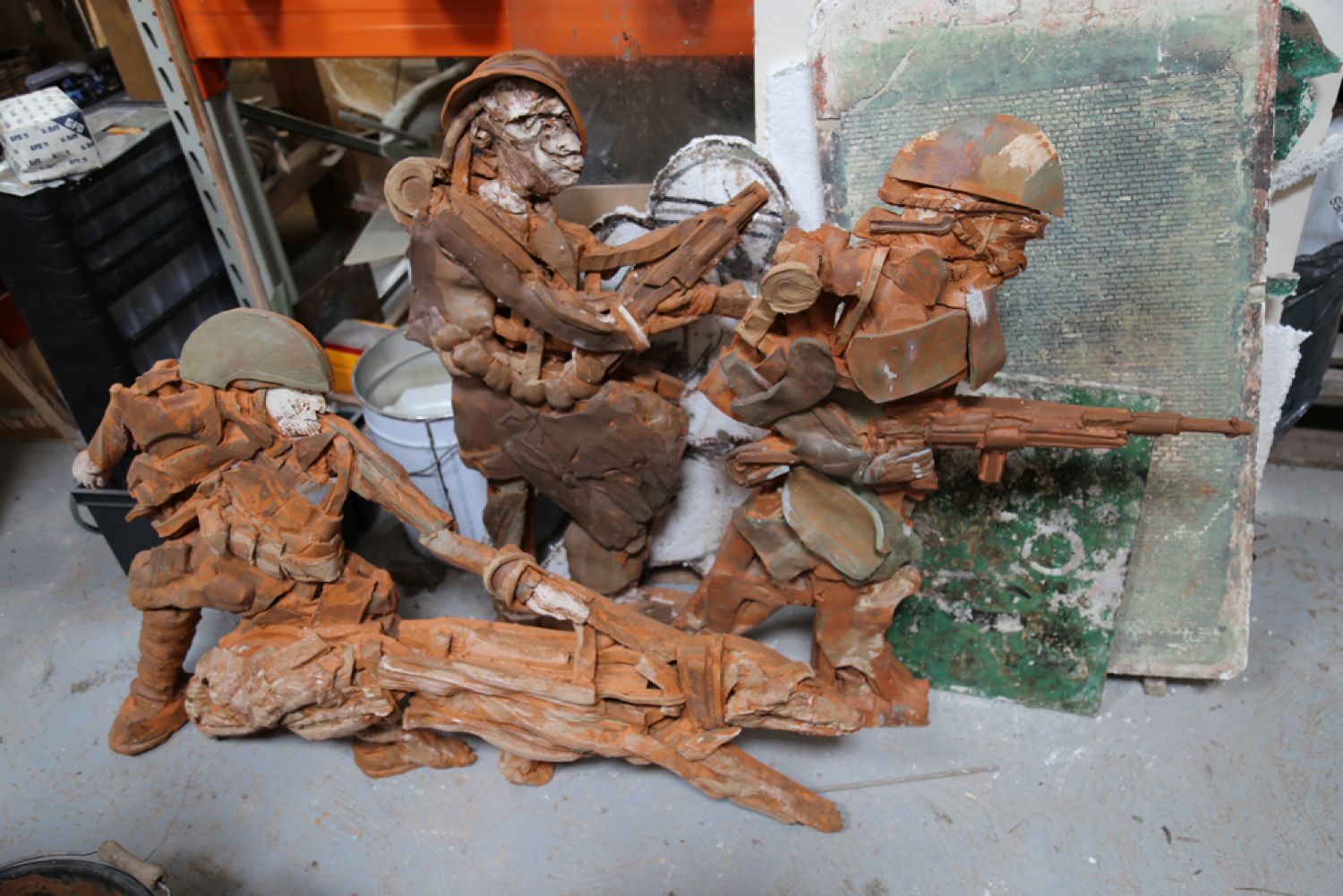
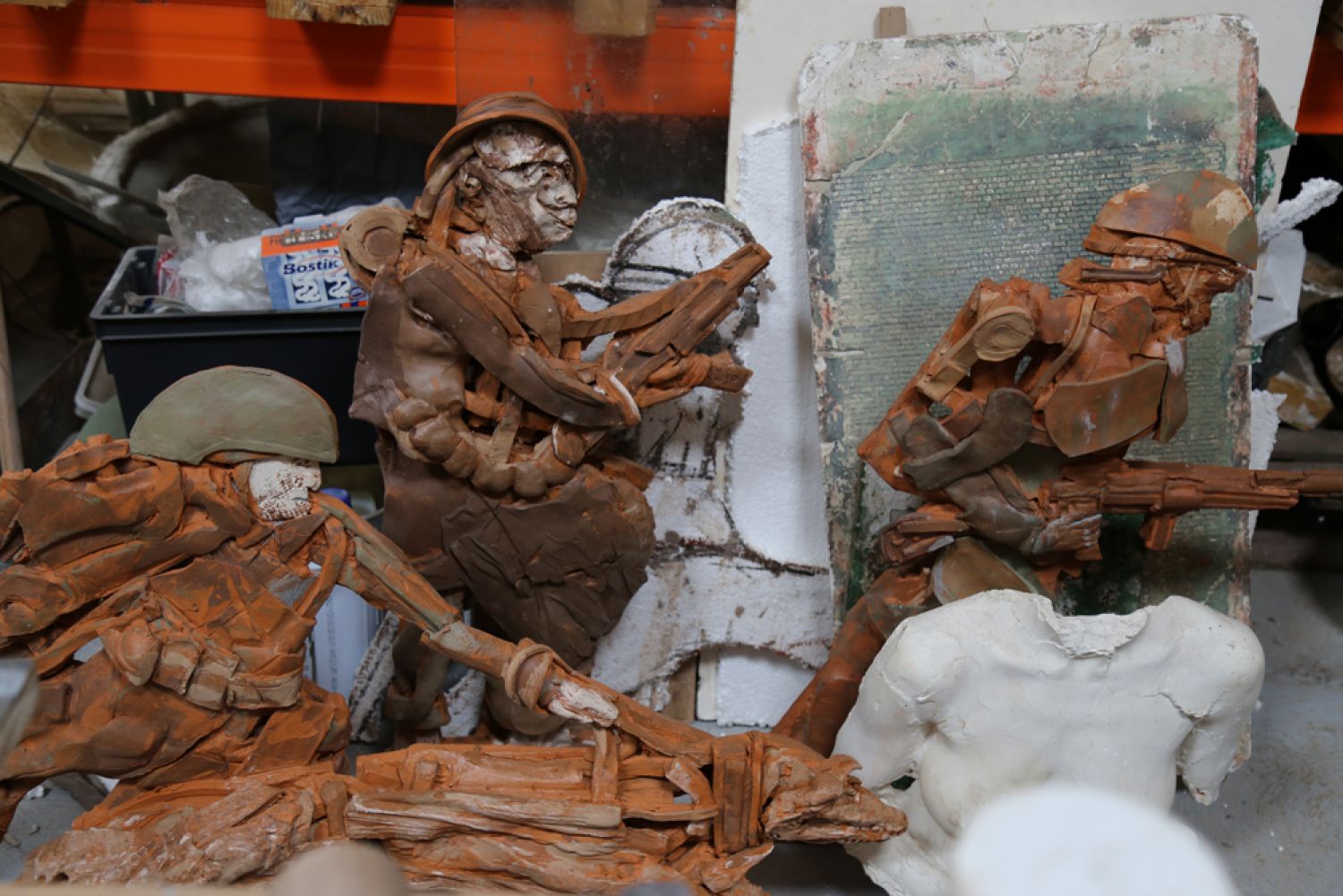
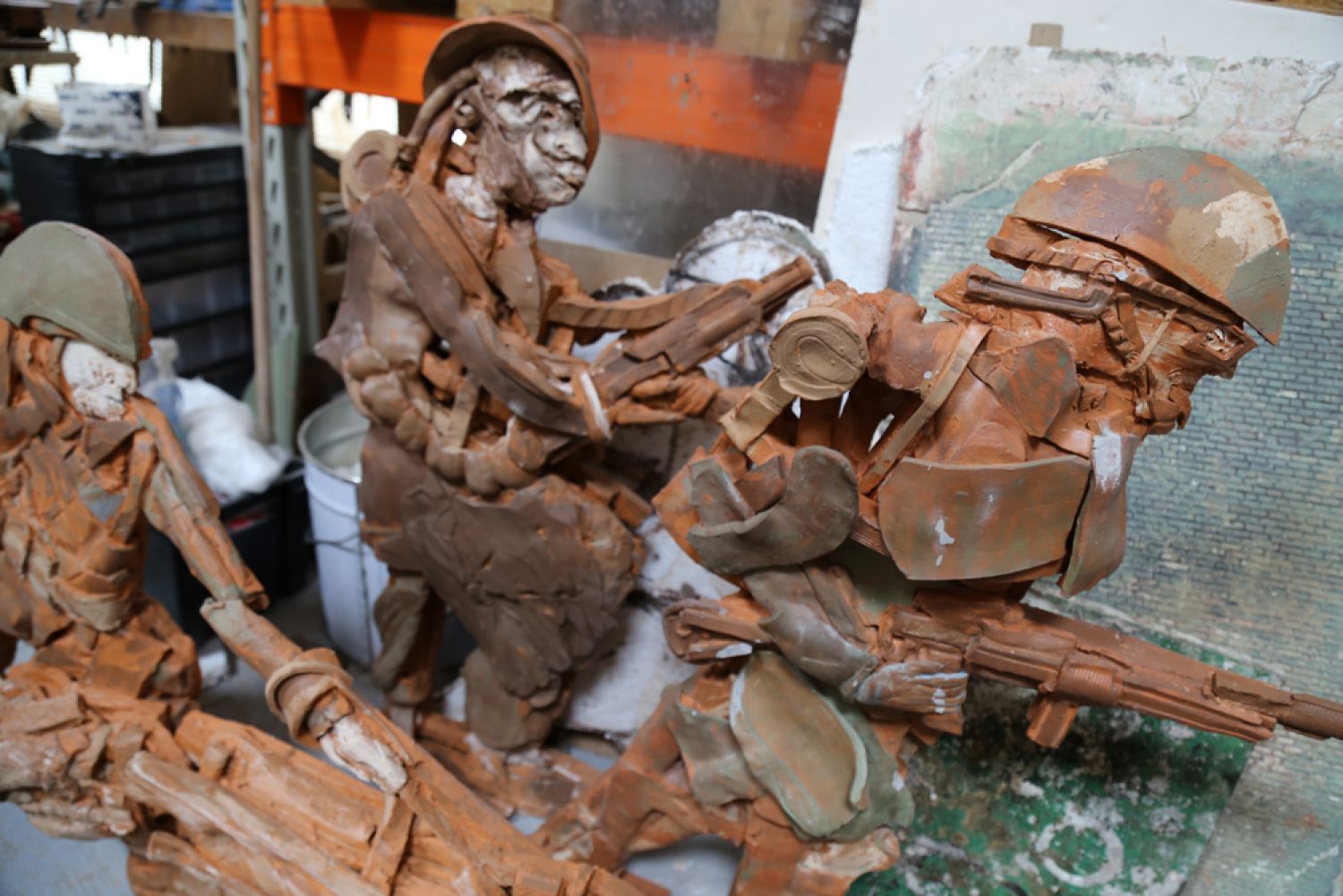
That is the point where I am at, now. I have built a few characters, I lay them down in the space grid of the chalets and after the soldiers modelling, I observe the effects at each step of the installation process. As Gilbert Simondon puts it, «one could say that the forms delivered to our touch, to our gaze, which are series of structure rearrangements and functions chained in time, are product by men who may not know each other, but who are, at least, connected by objects» (The invention of techniques). It is a fact that our society has changed the value of things.
Workshop notes (III)
The role of objects in the production of meaning
In painting, the arrangement of the theme is very much related to the composition. To construct an aesthetic event, to methodically make the organization of what must be seen first, to lead the eye to understand the interest of the order of things, the artist organizes a certain trajectory that he tries to conceal. If we wish to, we can then decipher his way of leading us to the meaning of the painting. The narrative is revealed to us, if we follow the strategy of the thematic journey.
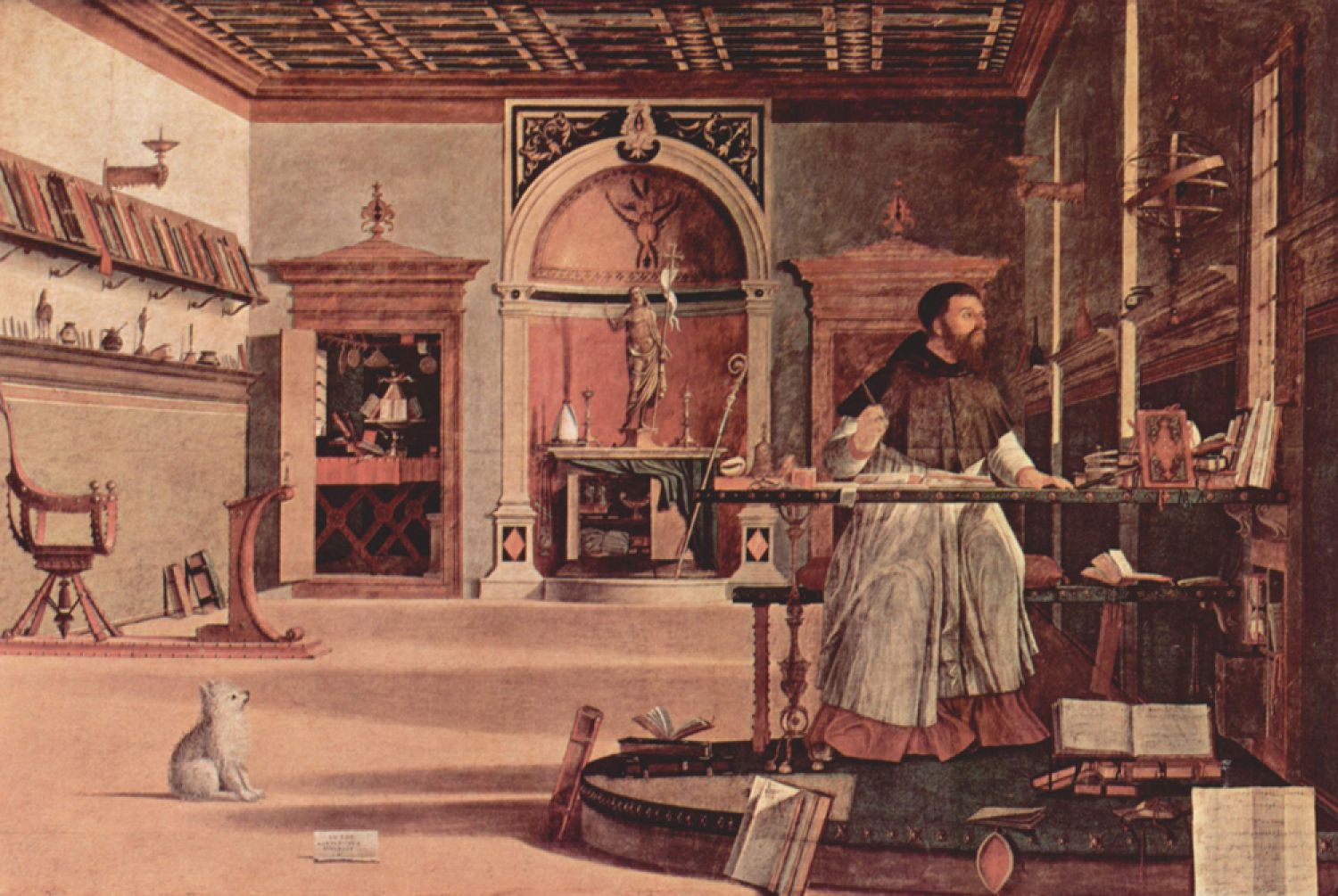
Before the Dream of Saint Augustine painted in the beginning of the 16th century by Vittore Carpaccio, for the Scuola degli Schiavoni in Venice, I wanted to understand how the painter directs us to the rhythm of his time. Beforehand, by the arms of drawing, I wanted to verify this theme, which meticulously describes the appearance of Saint Jerome to Augustine, bishop of Hippo around 420.
Long before the birth of photography, the painter makes us participate in a snapshot, he makes us witness a crucial moment in the life of the Saint by the scholarly organization of an interior space called the studiolo. So I traced the perspective lines, and I noticed that they converged at a vanishing point (which must be at the height of the eye of the observer). This point is the only place that shows a gesture, that of an arm suspended which seems to stop before the news of a sudden apparition, which (at least the historians confirm it) would be that of Saint Jerome announcing to Augustine his death. Jerome is absent from the scene, probably outside the room. Only Augustine sees and senses him. Inside, from the dog to the light, everything is suspended, fixed by a «freeze-frame». The dog and the master seem to be caught in the light coming from the window. Once the check was done, I noticed an open book in the foreground, in which is written a perfectly legible music score, although somewhat blurred nowadays. After verification, this music is likely to be played. At least, the viewer can see the painting with the music in his head.
The objects ordered in the composition come from various cultures, those are carefully arranged, methodically, some inform us about the history of Augustine, his religious life but also his profane. The books are also ordered so that we can know their number. Michel Serres (Esthétiques sur Carpaccio) confirms it, there is no less than ninety-six books, a number corresponding exactly to the one given by Augustine himself, around 426, four years before his death, in his Retractations, a record of his works. At the bottom right, an hourglass, looking closely, one can understand that the grains of sand have finished their work. To continue the time course, you have to turn the hourglass. Would this painting announce a double death, and if all the books of the work of the holy philosopher are present, would everything have been said then? And we, the witnesses of the scene, spectators of a piece built in the italian style, we are confronted with a history that can only be understood if we accept the rule of the painter’s game who seems to challenge us on the place taken by the objects in the space. A space which freezes the meaning of an instant, which admits that all the elements made of flesh, wood, tissue and stone organize the scene by their localisation and their identity, and that the hierarchy of power is elsewhere, and certainly not in this snapshot where everything participates in the «mise à mort» of the apparition of the one who suspects its disappearance.
In fact, what do these atypical workshop notes and reflexions consist of? Shall one say to himself that all these phenomena, which populate our universe, are constructed by an obviousness, which slightly exceeds our understanding? Or shall one let the things happen and then use his intuition for a reason quite simple: in front of the misery of the world, the artist has the right to play or to make believe that he puts one foot aside…



